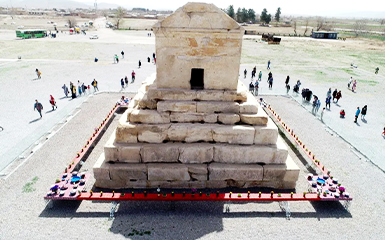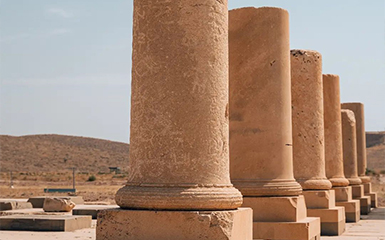Ardabil
Arg-e Bam
Abyaneh
Babak Castle
Behistun
Chogha Zanbil
Dasht-e Lut
Golestan Palace
Isfahan
Imam mosque
Kashan
Kharanaq
Mashhad
Masuleh
Meymand
Pasargadae
Naqsh-e jahan
Naqsh-e Rostam
Persepolis
Rayen Citadel
Saint Thaddeus
Saint Stepanos
Shiraz
Shushtar
Sultan Amir Ahmad
Tabriz
Takht-e Soleyman
Tehran
Tower of Silence
Yazd
Pasargadae

The marvelous city of Pasargadae is the true origin of the three Persian tribes, from which the Achaemenid clan was descended. It offers magnificent places of exploration and incredible moments of discovery. Located in the Morghab mountain range. Archaeological evidence has proven that the foundation of the city would have taken place after the conquest of Sardis, around 546. It is a city that was built by Emperor Cyrus II the Great in 550 on the site where he won the battle against the King of the Medes (his grandfather) Astyages.
The archaeological site covers 1.6 km², and the ruins are very scattered. Once there, you will realize that the citadel is the heart of this marvelous city. Known as Tell-i-Takht or Toll-e Takht, it means "Throne Hill". You will admire its garden inside. It is simply a paradise! You will discover a splendid palace made up of two small units, namely the residential palace and the audience hall. There is also a monumental gate and a magnificent tower called “Zendan-i Suleiman”.
The residential palace of Cyrus II is 2,620 m2. Although it is in a state of ruins, you will discover a central hypostyle hall with five rows of six columns whose bases are white and black. You will visit its four terraces in four directions and two rooms at its corners. Discover its grand hall of eight columns. This residence was built to withstand a serious earthquake whose intensity could be estimated today at 7.0 on the Richter scale.
Your enlightenment will be total when you come to this site. The most important monument in Pasargadae is the small tomb of Cyrus II. It is located a little southwest of the city. It is a small square mausoleum with six staircases leading to the sepulchre, covered with a double sloping roof. The burial chamber, 3.17 meters long and 2.11 meters wide, has a narrow entrance. Because of the greatness of the man whose body rests in this tomb, all the leaders of the country come to meditate there and honor the great emperor.
It is simply magnificent. You will not leave the great city of Pasargadae without admiring the architectural style that was used to build the marvelous audience hall located in the citadel. This style belongs to the tradition of Iranian nomads who lived in large tents mixed with elements from other cultures. Thus, the Assyrian technique served as a model. Ionian and Phoenician stonemasons carried out work.

